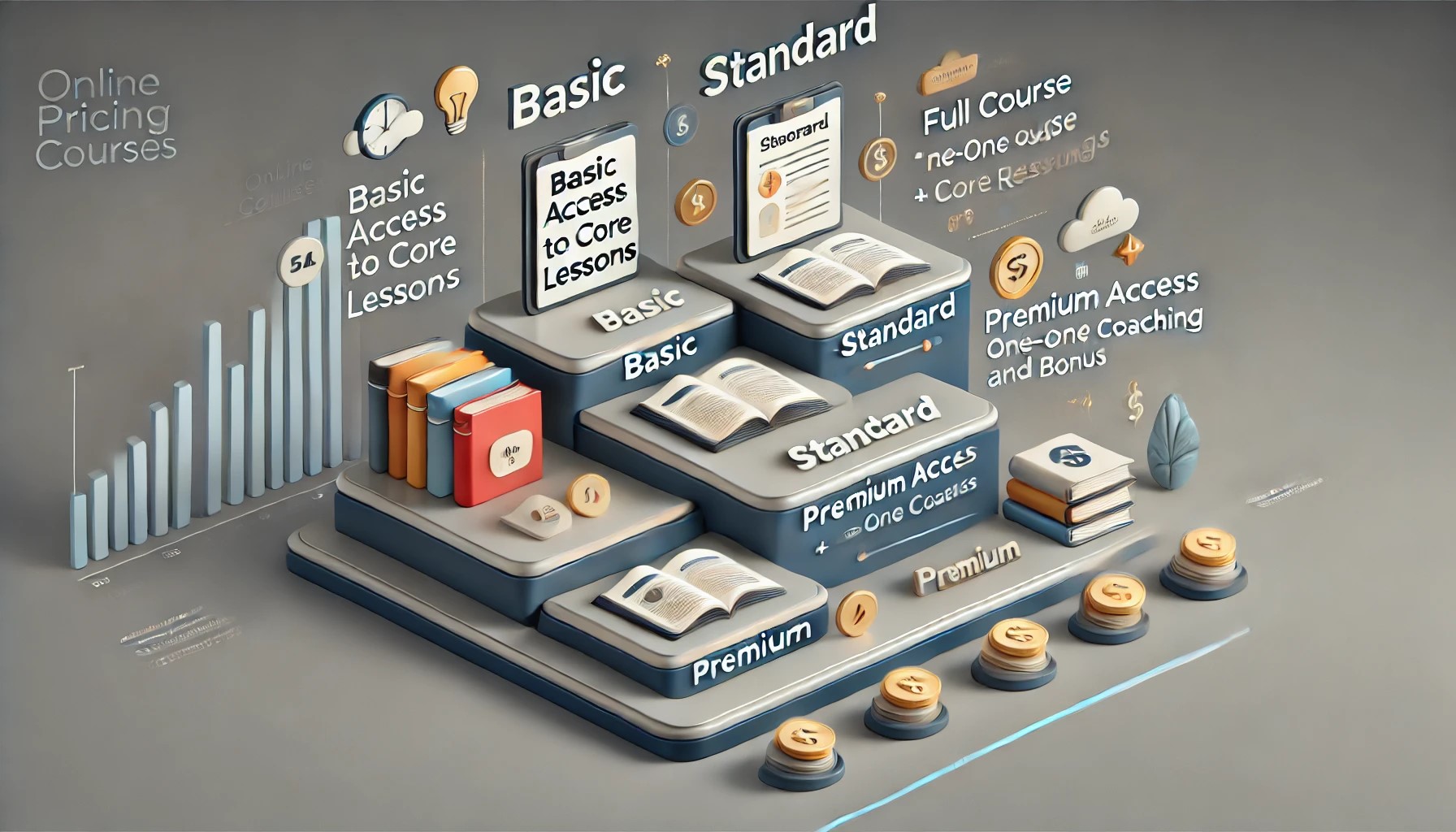
Your pricing strategy can make or break your success when offering online courses. One-size-fits-all pricing won’t work when your audience consists of everyone from curious beginners to seasoned pros. That’s where tiered pricing comes in. It lets you tailor different price points for varying levels of value, helping you reach a wider audience and maximize revenue. Let’s dive into some pricing strategies for tiered courses that will help you grow your educational empire!
Segmenting Your Audience: The First Step in Tiered Pricing for Courses
Every course creator knows that not all students are the same. Some might just want to get their feet wet, while others are ready to dive headfirst into all the advanced material you offer. That’s why segmenting your audience is the first step in creating a successful tiered pricing model.
- Basic Tier: For the curious learners who just want an intro or a taste of what you’re teaching. Offer essential modules or lessons at an affordable price to hook them in.
- Standard Tier: This is your main course, with the core content that will give students solid skills and knowledge. It should appeal to the majority of your audience.
- Premium Tier: This tier is reserved for serious students who want to go deeper and gain access to advanced materials, personalized coaching, or certifications.
By segmenting your audience this way, you can create different price points that feel just right for each type of student.
- Pro Tip: Use surveys or analytics to better understand your audience. Find out how much they’re willing to invest in their education and adjust your tiers accordingly.
Value Laddering: Offering More at Each Tier
Here’s where the value ladder comes into play. Each pricing tier needs to feel like a logical step up from the one below. For example:
- Basic Tier: Limited access to core lessons or an introductory module.
- Standard Tier: Full course access, plus downloadable resources or quizzes.
- Premium Tier: Everything from the Standard Tier, plus bonus content, exclusive webinars, or one-on-one coaching sessions.
When students can clearly see the added value they’ll get at each tier, they’ll be more inclined to upgrade as they progress through your course material.
Pricing by Course Content: When to Charge for More
In the world of online learning, content is king. Some students will want access to everything, while others might only need a few targeted lessons. That’s where content-based pricing can be helpful. For example, you can:
- Offer a beginner’s course at a lower price.
- Create an advanced module priced higher for students wanting to deepen their understanding.
- Bundle your courses, giving students a discount when purchasing access to multiple levels simultaneously.
This way, students can pay for what they need, and you’re not leaving money on the table by offering only one flat rate.
Subscription-Based Pricing for Courses: Building Loyalty
Consider implementing a subscription model where students pay monthly or yearly for access to your content. This works exceptionally well if you have a lot of course material or frequently add new content.
Think of platforms like Skillshare or MasterClass—they charge a recurring fee for access to all of their courses. You can adopt a similar strategy by offering different subscription tiers, such as:
- Essential Subscription: Access to a limited number of courses or modules.
- Pro Subscription: Unlimited course access, including updates and new content.
- VIP Subscription: Everything is included in the Pro Subscription, plus exclusive content, direct access to instructors, and live coaching calls.
This builds loyalty and keeps students returning for more, especially when new material is constantly added.
Simplifying the User Experience: Keep It Clear
While it’s tempting to include a wide range of options, too much choice can lead to confusion (and decision paralysis). Keep your pricing structure simple and transparent. Ensure each tier is clearly defined so students know exactly what they’re getting at each level.
- Use Clear Comparisons: Side-by-side comparison tables show the differences between tiers.
- Highlight the Benefits: Focus on the key features differentiating each tier, like access to extra lessons, exclusive coaching, or downloadable resources.
Testing and Refining: Pricing Is Not Set in Stone
One of the best things about online course pricing is that you can always test and tweak it. Don’t be afraid to experiment with different price points, bundles, or features at each tier.
- A/B Test Your Pricing: Try offering different pricing options to other groups of students and see which performs better.
- Get Feedback: Ask your students what they value most about your course and how much they’d be willing to pay for extra features or content.
You can find the sweet spot that works best for your audience and your bottom line by continually refining your tiered pricing strategy.
Start Crafting Your Tiered Pricing Strategy Today
With a solid tiered pricing strategy, you can cater to many students, increase your course sales, and build a loyal learning community. Start by understanding your audience, offer clear value at each tier, and test your pricing until it feels right. Ready to level up your online course business? It’s time to create a pricing strategy that works for you and your students!